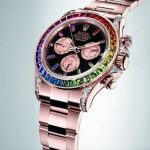
Interview
September marked the culmination of a months-long collaboration and competition involving over 50 students from the University of the Arts London, Central Saint Martins. They were challenged to reimagine various products using UPM's bio-based materials.
In today's rapidly evolving technological landscape, young designers face a dual challenge. They must not only keep up with the fast pace of innovation but also consider the environmental impact of their creations. Sustainability has emerged as a core tenet of design philosophy, requiring product designers to factor in environmental and social considerations alongside functionality and aesthetics. This includes choosing eco-friendly materials, eco-conscious production processes, and evaluating the broader impact of their designs. Ethical concerns, such as societal impact, privacy, and inclusivity, further complicate the design landscape.
FashionUnited had the opportunity to speak with three winners of the design competition, shedding light on their design approaches and the influence of sustainability on their work with UPM's materials.
What inspired you to create your product, and how did your design process reflect your commitment to sustainability?
Edward Wilken, creator of Boarderline: "I was inspired to create my product to address a sustainability issue in the snowboarding market, where bindings typically have a short lifespan and aren't recycled. I designed a modular, interchangeable system to allow riders to progress without limitations and reduce waste. This closed-loop system encourages users to return their bindings, as they can be upgraded and personalized. This sustainable approach aims to extend the life of bindings, aligning with the unique and personal nature of snowboarding."

Ella McLaggan, founder of Modular Shoe, explained her product's origin: "I was inspired to create my product by the environmental issue of shoe waste. I aimed to design a shoe that could be repaired and recycled, reducing landfill waste. My inspiration came from studying the Air Force 1 shoe's multiple iterations. I developed a modular shoe that allows users to change colors and patterns to stay trendy without buying new shoes." Ella emphasized sustainability during the design process by minimizing waste through 3D printing and knitting.
Oliver Valentine, creator of Exoflex, shared his inspiration: "My product inspiration stemmed from a passion for motorcycles and their potential to provide sustainable transportation. Recognizing the safety risks, especially in developing countries where protective gear is lacking, I aimed to create a sustainable armor system. To reflect my commitment to sustainability, I designed it as a monomaterial solution that minimizes plastic usage, making it easier to recycle or repurpose while using the least amount of materials possible."

Can you share some of the key sustainable features and materials incorporated into your product, and explain how these choices contribute to a more sustainable future?
Edward: "In designing my bindings, I adopted a mono-material approach using nylon 12, a versatile material that can be tailored for various binding components. This choice allowed for strength, flexibility, and weight optimization crucial for different riding styles. The use of interchangeable components, such as drive plates with varying lattices and high backs, demanded distinct material capabilities. By treating the plastic's physical structures as a material in itself, I ensured ease of recycling for a sustainable end-of-life solution."
Ella: "The shoe consists of four distinct components, each crafted from a single material and connected by a user-friendly, easily removable stitch. This design facilitates component separation and recycling, ensuring that every part of the shoe can be recycled rather than discarded at the end of its life. Additionally, the shoe is crafted entirely from UPM's bio plastic, derived from sustainably managed forests' wood pulp rather than fossil fuels. Its minimalist design uses only the essential components, minimizing material waste and contributing to a more sustainable future."
Oliver: "The key sustainable features of the Exoflex system are its modularity, enabling the replacement of broken panels, reducing the need for new products. It's made entirely of TPU, increasing recyclability by eliminating material separation. This single-material approach also reduces production costs and processes, contributing to sustainability."
Sustainability often involves a balance between functionality, aesthetics, and ecological impact. How did you address this balance in your design, and what challenges did you face in achieving both sustainability and user appeal?
Edward: "I achieved a balance between functionality, aesthetics, and ecological impact in my design by embracing biomimicry. I studied natural wood patterns to inform the aesthetics of my bindings, mirroring the qualities of flexibility, strength, and weight variation found in nature. For example, in freestyle bindings, a more web-like and hollow form indicated flexibility and forgiveness to users. Similarly, I incorporated wood-grain-inspired patterns into footbeds to provide cushioning and grip, drawing from different tree ages for varying features."
Ella: "I balanced functionality, aesthetics, and ecological impact in my Modular shoe design by making it suitable for all ages and allowing users to customize its colors. The shoe has a simple top design and hidden sole details, making it versatile for various outfits. It aims to be an everyday shoe that prioritizes repairability while considering fashion choices. The challenge was encouraging consumers to shift from buying new shoes to repairing them. The modular design addressed the desire for novelty while being functional and appealing to a broad audience, eliminating age-specific design to ensure sustainability options for everyone worldwide."
Oliver: "I prioritized form and function to save lives and enhance mobility for motorbike riders. The design is modular, allowing users to customize it, and uses minimal material for a sleek, wearable profile. This approach balances sustainability and user appeal, overcoming challenges to make safety desirable and versatile."

The students and designers at Central Saint Martins collectively showcased that sustainability isn't merely a passing trend but rather a profound transformation in design philosophy. Their inventive creations underscore the potency of sustainable materials and methodologies in propelling constructive change within the design realm, nurturing an industry that is more attuned to environmental considerations and ethical principles. However, substantial challenges lie on the horizon. Despite these ingenious concepts, the path forward involves the production, retail distribution, marketing, and ultimate adoption of these products by consumers. For many profit-oriented enterprises, sustainability serves as just one avenue towards achieving growth.


